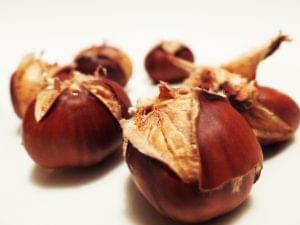Sweet chestnut cultivation is concentrated in Transdanubia
Chestnuts are grown on the largest surface in Vas, Somogy and Zala counties. In addition to the unique taste of this shelled fruit, it also has excellent content values - draw attention to the National Chamber of Agriculture (NAK) and its program promoting the consumption of vegetables and fruits, the European Fresh Team.

(Photo: Pixabay)
The sweet chestnut is native to southern Europe, eastern Asia and North America. Based on the finds discovered in the Anna Cave in Bükk, the ancients knew it already in the Neolithic Age. In our country, already in the XIII. was in cultivation in the century.
The expected age of the sweet chestnut is extremely high, it can even be hundreds of years
There are 5-600 year old chestnut trees around Kőszeg. The sweet chestnut is also native to Hungary, but special ecological requirements must be met for its cultivation, as it requires wetter weather, higher humidity and acidic soil. For this reason, commercial-scale cultivation is only possible in a few parts of the country, such as the southern Transdanubian, western Transdanubian and Börzsöny mountain regions. It is typically a small-scale plant, similar to the hazelnut. The commodity plantations planted in the 1970s, with a total area of about 450 hectares, have now almost completely disappeared. Even today, most of the annual harvest comes mainly from scattered chestnuts in the groves and wild stands.
Sweet chestnuts are grown on about 276 hectares in our country
The largest area is in the counties of Vas and Somogy (74 hectares each) and Zala (58 hectares). The Hungarian sweet chestnut varieties clearly represent the main domestic growing regions: the Alpokalja region, which is dominated by the Kőszegszerdahelyi 29, and the Southern Transdanubia, which is dominated by the Iharosberényi varieties. Nagymaros varieties were cultivated in Northern Hungary, but the volume of cultivation here is now very small. We can also meet landscape varieties, such as early Nemeshetés (Nemeshetés, Zala county), late Maróti (Danube bend) and Maróti big-eyed (Danube bend). The national annual yield is typically between 150-300 tons, which can be attributed to the small number of plantations and the lack of development in cultivation technology. Our exports are negligible, but the demand from the processing industry is significant, so we need to import chestnuts. Imports range from 2,000 to 2,500 tons per year, worth HUF 1-1.2 billion, typically from Italy.
With its unique taste, it is a typical Christmas delicacy that cannot be missed, roasted chestnuts at fairs, cakes with chestnut filling on festive tables
In terms of its content, it contains only a very small amount of fat and no cholesterol at all, informs the European Fresh Team program. Thanks to its high carbohydrate content, it can replace cereals and potatoes in our diet. The content of vitamins B1, B2, B6, C, and E, the content of folate (the naturally occurring form of vitamin B9) is not negligible, and it is also rich in dietary fiber. It is a source of potassium and magnesium and an excellent source of sodium, copper, iron, calcium, manganese, phosphorus and zinc.
Related news
More than 100 Hungarian farmers also demonstrated in Brussels
🎧 Hallgasd a cikket: Lejátszás Szünet Folytatás Leállítás Nyelv: Auto…
Read more >Hungarian champagne crowns the end-of-year holidays!
🎧 Hallgasd a cikket: Lejátszás Szünet Folytatás Leállítás Nyelv: Auto…
Read more >NAK: Domestic producers await customers with an ample supply of all pine species
🎧 Hallgasd a cikket: Lejátszás Szünet Folytatás Leállítás Nyelv: Auto…
Read more >Related news
Christmas shock in commerce: for the first time, we can pay with bank cards in fewer places
🎧 Hallgasd a cikket: Lejátszás Szünet Folytatás Leállítás Nyelv: Auto…
Read more >Hungarian Confectionery Manufacturers Association: trends in 2025 and prospects for 2026
🎧 Hallgasd a cikket: Lejátszás Szünet Folytatás Leállítás Nyelv: Auto…
Read more >Most grocery chains will be open until noon on December 24th
🎧 Hallgasd a cikket: Lejátszás Szünet Folytatás Leállítás Nyelv: Auto…
Read more >






